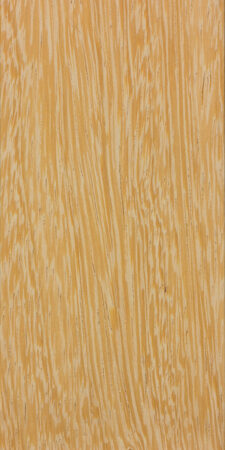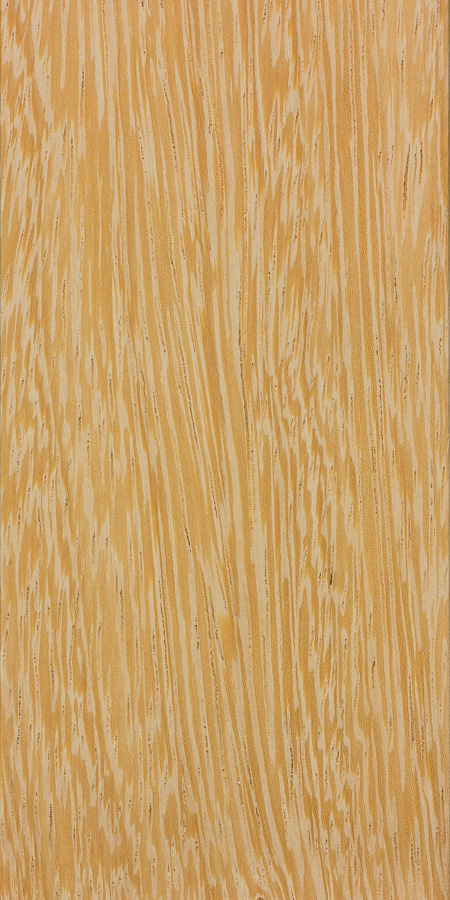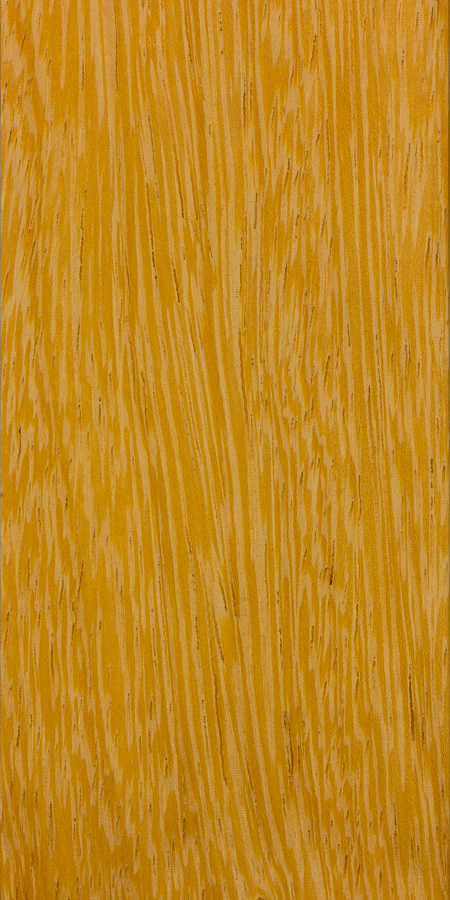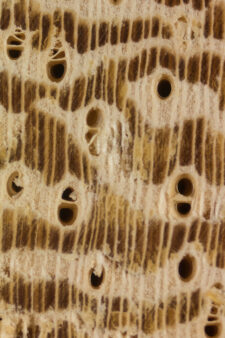Common Name(s): Lati, white wenge, yaya
Scientific Name: Amphimas pterocarpoides and A. ferrugineus
Distribution: Central and West Africa
Tree Size: 100-150 ft (30-46 m) tall,
2-4 ft (.6-1.2 m) trunk diameter
Average Dried Weight: 49 lbs/ft3 (785 kg/m3)
Specific Gravity (Basic, 12% MC): 0.58, 0.78
Janka Hardness: 1,200 lbf (5,340 N)
Modulus of Rupture: 18,460 lbf/in2 (127.3 MPa)
Elastic Modulus: 2,147,000 lbf/in2 (14.81 GPa)
Crushing Strength: 9,070 lbf/in2 (62.5 MPa)
Shrinkage: Radial: 6.2%, Tangential: 10.6%,
Volumetric: 16.8%, T/R Ratio: 1.7
Color/Appearance: Heartwood is a light yellowish brown. Yellowish sapwood isn’t always defined from heartwood. Lati is sometimes called white wenge because of the similarity of its grain patterns to wenge (Millettia laurentii)—particularly on flatsawn surfaces. In both cases, this is due to very wide bands of parenchyma throughout the wood. The pale yellowish color tends to darken to a more golden yellow over time.
Grain/Texture: Grain is straight, with a uniformly coarse texture. Low natural luster.
Rot Resistance: Rated as non-durable to moderately durable; susceptible to most insect attacks, though moderately resistant to termites.
Workability: Generally easy to work with hand and machine tools, though the wood has higher-than-average cutting resistance (as well as good wear resistance). Drying defects can occur if working with green wood. Moderate blunting effect on cutting edges. Glues and finishes well.
Odor: No characteristic odor.
Allergies/Toxicity: Besides the standard health risks associated with any type of wood dust, no further health reactions have been associated with lati. See the articles Wood Allergies and Toxicity and Wood Dust Safety for more information.
Pricing/Availability: Not commonly seen or imported, lati is occasionally offered for sale as lumber or veneer. Expect prices to be moderate for an imported hardwood.
Sustainability: This wood species is not listed in the CITES Appendices, and is reported by the IUCN as being a species of least concern.
Common Uses: Veneer, plywood, interior trim, furniture, and flooring.
Comments: Generally not regarded as being very stable in service, which is aggravated by the fact that the flatsawn surface (i.e., the least stable surface) is considered the most decorative and showy. Nonetheless, flatsawn lati has a unique grain appearance that is very similar to wenge, though in a golden yellow color rather than dark brown. Botanically, lati and wenge aren’t closely related, and occur in two separate genera, Amphimas and Millettia, respectively.
Images: Drag the slider up/down to toggle between raw and finished wood. A special thanks to Justin Holden for providing the wood sample of this wood species.
Identification: See the article on Hardwood Anatomy for definitions of endgrain features.
Porosity: diffuse porous
Arrangement: solitary and radial multiples
Vessels: large to very large, few to very few
Parenchyma: confluent, banded (very wide)
Rays: medium; normal spacing
Lookalikes/Substitutes: Overall appearance can resemble iroko (Milicia excelsa), and lati is sometimes used as a substitute for the more-durable iroko. Lati can usually be separated from iroko based on its wider and more extensive parenchyma bands.
Notes: Lati is sold using both Amphimas pterocarpoides and also A. ferrugineus. The two species are very closely related and can’t be reliably separated on the basis of wood anatomy.
Related Content:












it is truly UNCANNY, how identical the grain is to wenge (Milletia Laurentii), except light instead of dark….
I found some wooden parque flooring with similar wood
nobody could help to ID seems I found the bugger Latti
Wish I could show you a picture …an African waal clock I made
also on my Afrikaans FB page… @Izak se Houtwerk
There is wenge and Khaya mahogany probably